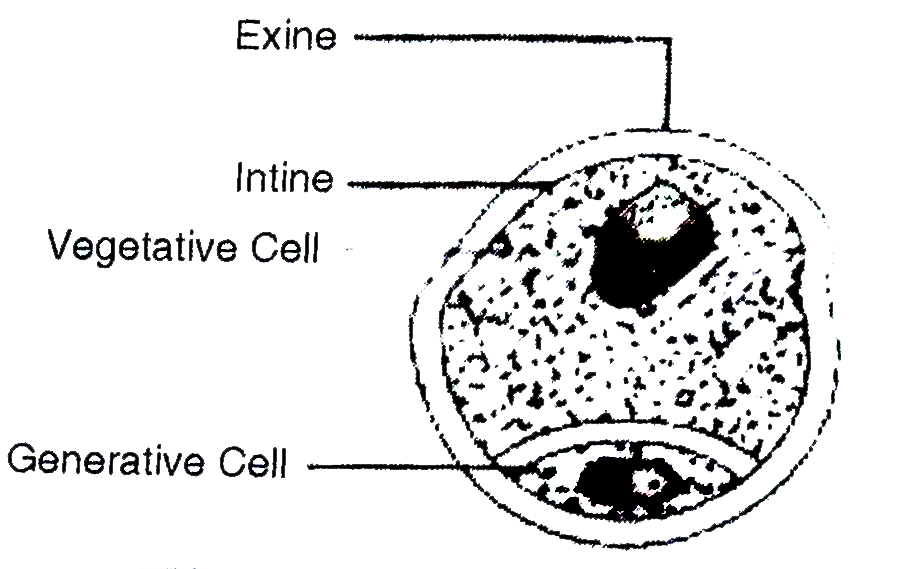Draw a neat labelled diagram of the sectional view of human mammary gland.
Step-by-Step Solution for Drawing a Sectional View of the Human Mammary Gland
1. Start with the Outline: Begin by drawing the overall shape of the mammary gland. It resembles a rounded structure that is slightly flattened on one side. This will form the basic outline of the gland.
Hint: Remember that the mammary gland is typically depicted as a rounded structure, so keep the proportions in mind.
2. Divide into Lobes: Inside the outline, draw 15 to 20 smaller sections to represent the mammary lobes. These sections should be somewhat triangular or lobular in shape, radiating from a central point.
Hint: Each lobe should be distinct but connected to the central area of the gland.
3. Add Alveoli: Within each lobe, draw clusters of small circles or oval shapes to represent the alveoli. These are the milk-secreting cells and should be grouped closely together.
Hint: Alveoli are the functional units of the mammary gland, so ensure they are densely packed within each lobe.
4. Draw Milk Tubules: Connect the alveoli to small tubes that lead out of each lobe. These are the mammary tubules, which transport milk from the alveoli.
Hint: The tubules should be thin and can be drawn as lines leading from the alveoli towards the ducts.
5. Form Mammary Ducts: As the tubules come together, they should merge into larger ducts. Draw these ducts leading from each lobe towards the center of the gland.
Hint: The ducts should gradually increase in size as they converge from the lobes.
6. Include the Ampulla: At the junction where the ducts converge, draw a wider section to represent the mammary ampulla. This is where milk is temporarily stored before being released.
Hint: The ampulla should be larger than the ducts but still maintain a smooth transition.
7. Draw the Lactiferous Duct: From the ampulla, draw a single duct leading towards the nipple. This is the lactiferous duct, through which milk exits the gland.
Hint: The lactiferous duct should be clearly labeled and can be slightly thicker than the other ducts.
8. Add the Nipple: At the end of the lactiferous duct, draw the nipple. It should be a small protrusion at the surface of the gland.
Hint: The nipple is a key feature, so make sure it is clearly visible and proportionate to the gland.
9. Label the Diagram: Clearly label all parts of the diagram, including the mammary lobes, alveoli, mammary tubules, mammary ducts, ampulla, lactiferous duct, and nipple.
Hint: Use straight lines to connect labels to the corresponding parts for clarity.
10. Final Touches: Review your diagram for neatness and accuracy. Ensure that all parts are clearly visible and that the labels are legible.
Hint: A clean and well-organized diagram enhances understanding, so take your time to make it neat.
Topper's Solved these Questions
- HUMAN REPRODUCTIONBOOK - MODERN PUBLICATIONCHAPTER - HUMAN REPRODUCTIONEXERCISE - REVISION EXERCISES (SHORT ANSWER TYPE QUESTION (B )QUESTIONS FROM CBSE EXAMINATIONS)
19 Videos
- HUMAN REPRODUCTIONBOOK - MODERN PUBLICATIONCHAPTER - HUMAN REPRODUCTIONEXERCISE - REVISION EXERCISES (LONG ANSWER TYPE QUESTION (A) QUESTION FROM STATE BOARD EXAMINATION)
54 Videos
- HUMAN REPRODUCTIONBOOK - MODERN PUBLICATIONCHAPTER - HUMAN REPRODUCTIONEXERCISE - REVISION EXERCISES (SHORT ANSWER TYPE QUESTION (B)QUESTIONS FROM CBSE EXAMINATIONS)
18 Videos
- HUMAN HEALTH AND DISEASESBOOK - MODERN PUBLICATIONCHAPTER - HUMAN HEALTH AND DISEASESEXERCISE - Chapter Practice Test
2 Videos
- MICROBES IN HUMAN WELFAREBOOK - MODERN PUBLICATIONCHAPTER - MICROBES IN HUMAN WELFAREEXERCISE - CHAPTER PRACTICE TEST (Long Answer Type Question )(Five marks each)(Section -E)
8 Videos
Similar Questions
Draw a neat labelled diagram of nucleus.
View SolutionDraw a well labelled diagrammatic sectional view of mammary gland. Describe its structure. (
View SolutionDraw a labelled diagram of a sectional view of human ovary showing various stages of follicles growing in it.
View SolutionDraw a neat labelled diagram of an animal cell.
View SolutionDraw a neat labelled diagram of a biogas plant.
View SolutionDraw a labelled diagram of the sectional view of a mature pollen grain in angiosperms. Explain the functions of its different parts.
View SolutionDraw a labelled diagram of the sectional view of a mature pollen grain of angiosperms. Explain the function of generative cell and vegetative cell

View SolutionDraw a neat labelled diagram for the electrolysis of water.
View SolutionDraw a neat and labelled diagram of human sperm
View SolutionDraw a neat labelled diagram of an animal cell.
View Solution
